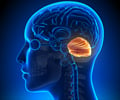Australian researchers have devised an animal model for neurodegenerative diseases. For the first time Parkinsonism has been introduced in mice.
Australian researchers have devised an animal model for neurodegenerative diseases. For the first time Parkinsonism has been introduced in mice.
At present neither Alzheimer's disease (AD) nor Frontotemporal dementia (FTD) can be cured. Therefore, it is important to model the human diseases in animals to determine what is causing them and to develop a cure for these debilitating diseases.Dr Lars Ittner and Professor Jürgen Götz from the University's Brain and Mind Research Institute, Sydney have made a breakthrough on developing an animal model. Their work is published in the Proceedings of the National Academy of Sciences, goes some way to providing an answer to these problems.
The paper describes a novel mouse strain of Pick's disease, a form of Frontotemporal dementia, which reproduces, for the first time, Parkinsonism (resting tremor, muscle rigidity, bradykinesia, and postural instability) in a mouse model.
"The mice even show a reduced footstep length that is reminiscent of Parkinson's disease," said Professor Götz. The researchers could also show that a single dose of L-Dopa (which is used to treat Parkinson's patients) caused a marked improvement in the transgenic mice.
The researchers, who are based at the Alzheimer's and Parkinson's Laboratory of the Brain and Mind Research Institute of the University of Sydney, could show that it is impaired transport along the long axons of nerve cells, which causes the observed phenotype.
"Specifically, we could show that transport is not generally impaired but rather that specific types of cargoes are not transported properly from the cell body to the synapses," said Professor Götz.
Advertisement
Advertisement
GPL/S









